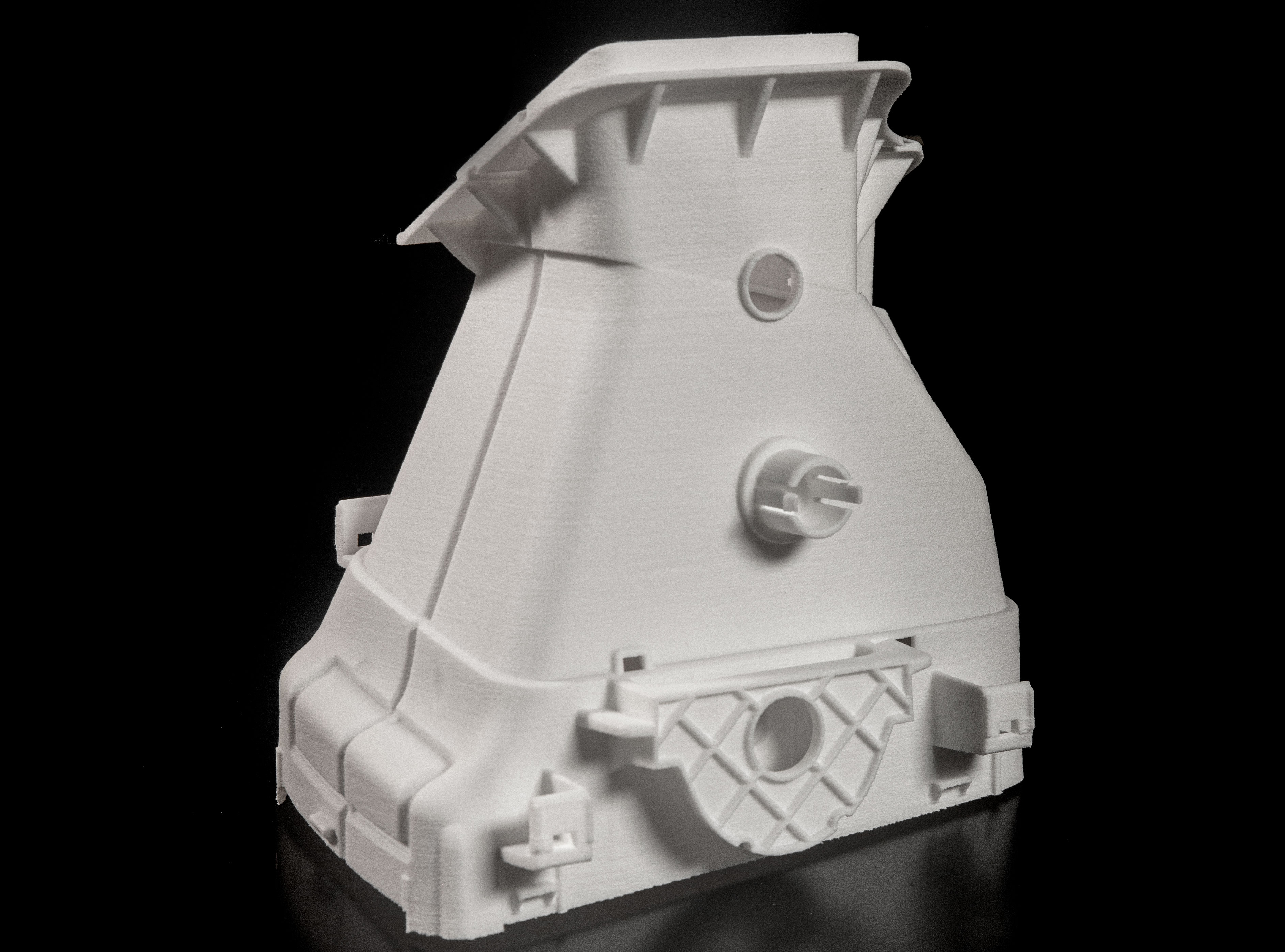South Korean 3D printer maker Sindoh has launched its Sindoh S100 industrial polymer 3D printer, which is the first commercial machine to offer Materialize’s Bluesint PA12 process technology and enables 3D printing with up to 100 percent recycled powder.
In addition to the Bluesint PA12, each S100 comes with Materialize’s Magics 25 3D printing software, Build Processor and Control Platform (MCP), and is fully compatible with Magics RP and the company’s Streamics Operations Management software.
In return, Materialize purchased five S100 printers and was the first to receive the latest machine from Sindoh.
“Bluesint PA12 is an important step in making 3D printing more sustainable,” said Fried Vancraen, CEO of Materialize. “The introduction of the Sindoh S100 printer, which will be the first to support Bluesint PA12, will help us empower our customers to make a sustainability decision.”
The Sindoh S100 polymer 3D printer. Image via Sindoh.
Reduction of powder waste with Bluesint PA12
Materialize unveiled its Bluesint PA12 technology last November, which aims to dramatically improve the resource efficiency of the laser sintering 3D printing process by enabling printing with up to 100 percent recycled powder.
The technology seeks to overcome the orange peel effect that is common on parts printed with recycled powder caused by the cooling of layers. This can result in parts having an uneven surface and reduced strength.
Parts printed with recycled powder using Materialize’s Bluesint PA12 technology are reported to have similar mechanical and visual properties to other fresh powders used in laser sintering. This is achieved through the use of two lasers, one of which is used to sinter a new layer while the other keeps the previous layer at the correct temperature.
Blueprint PA12 not only significantly reduces powder waste in 3D printing, it also delivers parts with the desired technical specifications.
With the integration of Materialize’s Bluesint PA12 technology, the Sindoh S100 is believed to be the first commercially available machine that can print with up to 100 percent recycled powder.

The Sindoh S100
The Sindoh S100 is the South Korean manufacturer’s first industrial polymer 3D printer, best known for its FFF (Fused Filament Fabrication) desktop line of products, including its WOX1, 3DWOX 2X and DP200 3D machines. In the past, Sindoh also worked with Japanese digital printing specialist Mimaki on a co-branded FFF printer, the 3DFF-222, which was designed for in-house production of custom fixtures and fixtures.
The latest machine from Sindoh offers a large build volume of 510 x 510 x 500 mm and is equipped with a dual feed system to increase print productivity. The printer offers a scanning speed of up to 15 meters per second and, thanks to its 3D-axis scanning technology, has two lasers with flexible spot sizes that make it possible to change the spot size of each laser independently of one another during operation.
The S100 can also work with layers of variable thickness, while its semi-automatic calibration function and remote diagnostic maintenance functions help ensure high operational efficiency.
The machine can handle processing temperatures of up to 200 ° C and is compatible with a wide range of polymer materials, including Evonik PA12, BASF Ultrasint PA11, TPU and PP.
Engineers can optimize and personalize the 3D printing process by optimizing the machine and process parameters using Materialize’s Magics 25, Build Processor and MCP software package, which enables excellent temperature control and edge print quality. In addition, the Magics RP and Streamics add-ons enable the machine to support industrial-scale 3D printing production. The Sindoh S100 3D printer can now be ordered with delivery schedules for the 2nd quarter of 2021.
“Sindoh S100 has both performance and economic value due to its large build volume and unprecedented recycling rate,” said Dr. Woo Suk-Hyung, chairman of Sindoh. “This new product also demonstrates the excellent synergy of Materialize software and Sindoh’s 60 years of hardware manufacturing experience.
“By combining the latest technologies from both companies, production costs can be reduced significantly and printing performance can be distinguished.”
Subscribe to the 3D printing industry newsletter for the latest news on additive manufacturing. You can also stay connected by following us on Twitter and liking us on Facebook.
Looking for a career in additive manufacturing? Visit 3D Print Jobs for a selection of roles in the industry.
The picture shown shows the Sindoh S100 polymer 3D printer. Image via Sindoh.
